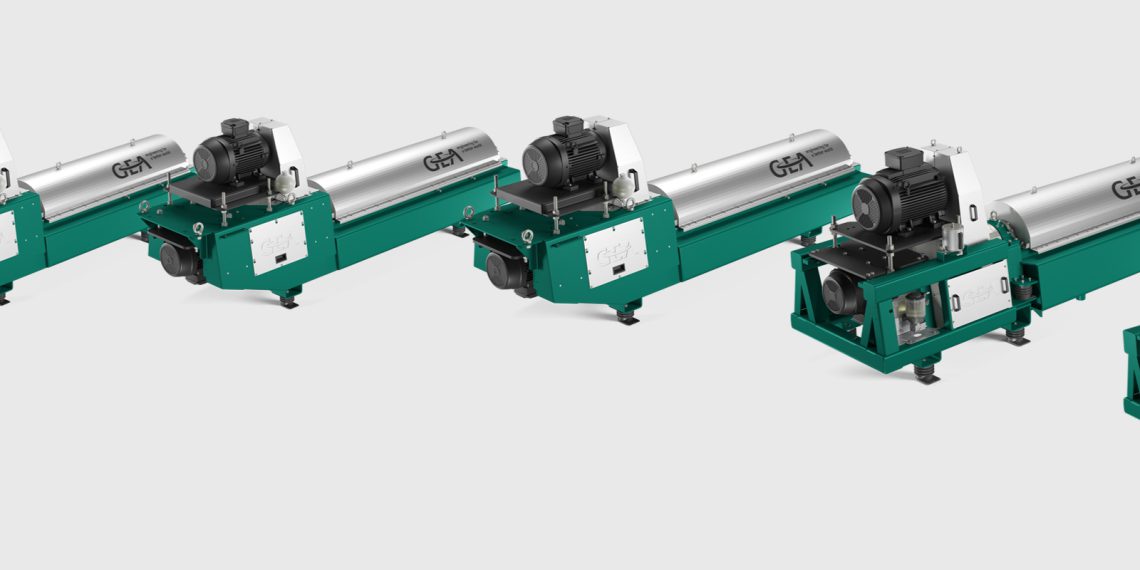Gea varipond stands for “variable pond depth” while the decanter centrifuge is running. In wastewater treatment plants, a precise, reliable process flow must be ensured, including in widely varying conditions. Such processes include dewatering and thickening of primary and secondary sludge. The varipond adjusts to changing requirements at lightning speed; its variable pond depth ensures solids are discharged at a stable rate while the decanter is running. Optical sensors measure the solid content of thickened sludge and compare this with the configured set point, while the control system keeps the concentration constant – with everything done automatically. This enables unsupervised operation even overnight and at weekends.
How it works
The point where the clarified liquid is discharged from the decanter bowl features an axially adjustable throttle disc which determines the width of the outlet aperture. A small gap means greater resistance, while a larger gap allows lower water discharge and a higher liquid level. Intelligent sensor technology automatically adjusts the aperture width according to the desired liquid level in the decanter bowl by moving the throttle disc into the optimal position while the machine is running.
Reduces decanter energy consumption
The energy consumption of a decanter centrifuge is determined, among other factors, by the power required to discharge the clarified liquid. This can represent up to 50% of the decanter’s overall energy consumption. In order to achieve optimal separation performance when dewatering and thickening, specific G‑values are required within a defined range, depending on the sludge characteristics and flow volume. This means that continuously maintaining the maximum G‑value is often not necessary: a special control circuit in the varipond uses a sensor to identify unnecessarily high bowl speeds and optimizes them by constantly maintaining the required discharge concentration. The rotor geometry also provides additional energy savings. The design of the bowls in the Gea deep-pond design ensures optimized flow behavior and enhanced clarification effect, and means less energy is required to discharge the product. In short, this means that energy consumption can be reduced by up to 30%.

















